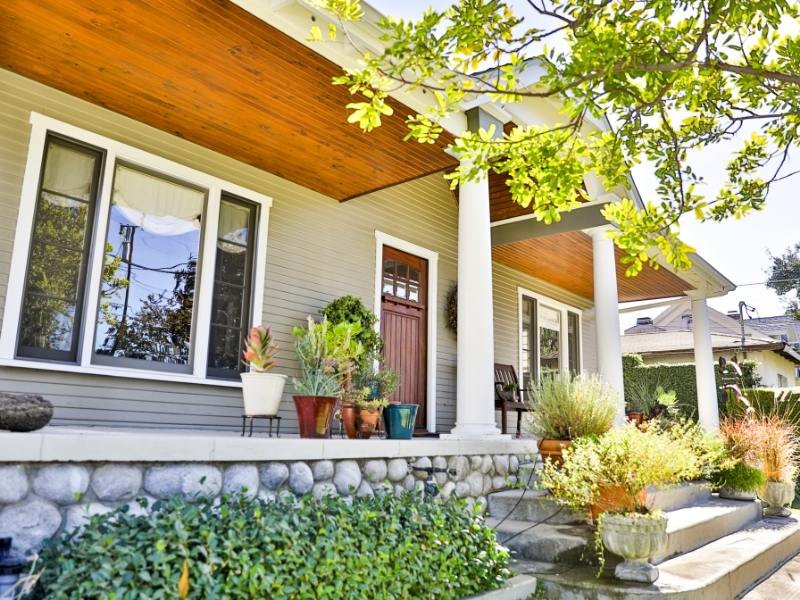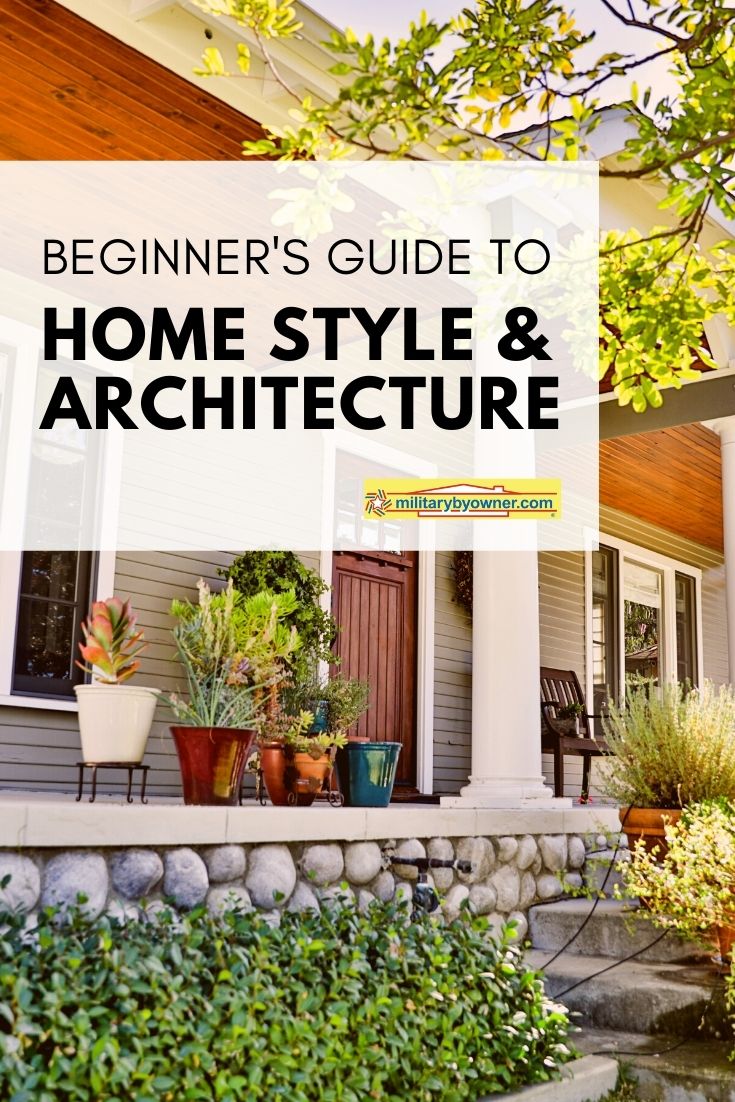
Image from Canva
In this article:
If you’ve started searching for a home, you’ve undoubtedly heard the phrases “split-level,” “ranch rambler,” and “mid-century modern”—even if it's just from watching your favorite house hunting shows. You may be familiar with the phrases, but do you know what the homes look like out in the wild?
When you’re house hunting, you’ll see an assortment of homes available on the market, so it's a good idea to learn about the styles you do and don’t like. There will be some architectural elements you’ll love and some you’ll hate immediately.
If you arm yourself with some home design knowledge before setting out to Sunday open houses, you’ll save time by avoiding deal-breaker properties. For example, if multiple sets of stairs are on your “No” list, you’ll want to steer clear of a split-level home.
First, it’s helpful to know the general construction style of the house.

Image from Canva
Common Types of Homes
Townhouse
Townhomes are often built with multiple levels, and it’s common to have a kitchen located on one of the upper floors. You’ll share walls with neighbors, and noise may be an issue. Ownership includes the land the townhouse is on and the exterior of your home, so the upkeep is also yours to manage, but most townhomes are low maintenance.
Outside, each townhouse has a separate entry and typically a small yard or deck. If a garage is available, it may also share a wall with the interior space. Townhouses are part of a homeowner’s association with fees for community lawn care, snow, and trash removal, to name just a few of the maintenance tasks covered.
Condominium
Condos often draw first-time buyers because they’re affordable and need little to no maintenance. However, some buyers don’t realize you’ll only own the space inside your condo. You won’t own the land it sits on, but all condo owners own a share of the exterior and common ground.
Condos are typically one to two levels, with elevators within a multiple-level building. They have shared hallways, entries, and interior walls. Parking varies from a community lot to heated underground garages and may require extra fees.
Owners also pay homeowner’s association fees, which tend to be higher than a townhouse. Fees include payments for exterior maintenance, insurance for repairs, and trash and snow removal.
Before buying a home, here’s what you should know: Tips for Dealing with Your Homeowners Association.
Multi-Family Residences
Multi-family residences range from a duplex to a four-plex. They are in simple terms; one house split into more than one dwelling unit. Multi-family residences are built in a couple of ways, either side by side or with a few floors. Some have a common entry, while others have separate doors for each tenant.
You would own the entire house, but the units cannot be sold separately. Many military buyers purchase a multi-family home as an investment.
Detached Single Family Home
Likely the most common and most expensive option, a single-family home is a significant undertaking, starting with the price tag, followed by ongoing maintenance and repairs. However, the entire property is yours to alter as you wish, and privacy is only limited to your closest neighbor.
A single-family home is an investment for the long term, but you’ll have the freedom to sell as needed. A house in a neighborhood may or may not have a homeowner’s association, but the fees are typically not as high as a townhouse or condominium.
It's all personal, but if you read What’s Your Home Style?, you’ll better understand how to bring your style home.

Image from Canva
The Top 10 Architectural Styles Found in the U.S.
Although many of the previously listed homes styles may have the "look" of a common architectural style, it’s common for buyers to envision a detached single-family home with specific architecture.
In the United States, these are the top 10 most preferred types of homes.
- Craftsman
- Country
- Traditional
- European
- Ranch
- Farmhouse
- Cottage
- Modern
- Southern
- Mediterranean
There are discrepancies among house style names from region to region and across the country. So for the best descriptions with illustrations of each residential style, refer to The National Association of Realtors publication, Realtor Mag.

Image from Canva
Why We Prefer Certain Residential Styles
Personal experience often determines a buyer’s preference for specific characteristics. For example, if you had an idyllic childhood in a country home, this might be the first style you choose. Conversely, a ranch home could be the perfect fit if you hated the flights of stairs in your standard colonial.
Today, the influence of home shows and popular DIY projects greatly impacts what viewers decide is the best type of home for their families. It’s very easy to get swept into the final product or "reveal shot" that encompasses a fully decorated and repaired home of the owner’s dreams.
Exposure to many versions of houses is helpful knowledge to compare and contrast, but the abundance of information also leads to disappointment if certain features are not available in your price range or location.
It’s interesting to note that geography plays a crucial role in prevalent residential styles. Temperature and even the construction site of a new build property come into consideration. This is why traditional brick homes in the desert southwest aren’t prevalent and why not every home is suited for a basement.
Pre-determining your family's needs and financial plans quickly rule out any type of residential style that doesn’t fit your practical requirements. Although you might have your heart set on a modern-rustic farmhouse, those won’t be plentiful in downtown Washington, D.C., where it’s necessary to find an easy commute to and from work.
Buying a home is a complicated and thoughtful process. Hopefully, after picking the practical parts of your new home, there will be room to explore different architectural styles to suit your creative spirit.
By Dawn M. Smith


back to top